Last Updated on April 18, 2024 by Michelle
The biggest question when it comes to milling fresh flour–How do you know which grain mill to buy?
As a grain mill connoisseur *cough* I decided it was time to break it all down for you.
Sidenote: The Classic Nutrimill Grain Mill is currently $50 off. Use code SOULYRESTED to save another $20! Go here to see everything that’s on sale, including the Bosch mixer bundles
(And by connoisseur I just mean I’ve just been fortunate enough to test drive most of the models we’re gonna talk about today.)

The Ultimate Guide to Choosing a Grain Mill
Without further ado, let’s answer your burning grain mill questions.
Listen to the podcast about choosing a grain mill
Today’s podcast episode is all about this very topic. I dive into all my thoughts about all 3 kinds of grain mills I’ve used over the years. Listen here. Or watch below. A few viewers’ comments on youtube:

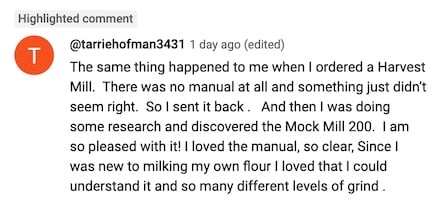
What to look for when buying a grain mill?
After many years of using and comparing 3 very different grain mills, I’ve decided these are the 6 questions I would ask before ultimately choosing a grain mill:
Is it a stone or steel mill?
Stone mills are extremely durable and even self-sharpening – an advantage over steel mills. Stone mills also tend to offer more variety of coarseness–from fine to coarse grinds. And the stones are typically easy to remove and clean off if they get a build up or film on them. My steel mill is completely closed/encased and could only be looked at or cleaned off by a skilled technician. But, as I explained this week in Episode 104 of the Simple Doesn’t Mean Easy podcast, my steel mill (The Classic) has always produced very fine flour that gives great results for my baked goods.
Does it provide flour-on-demand?
If you want to make flour as you need it, one cup at a time, then this question is an important one to ask. The Harvest and all Mockmills make flour on demand. The Classic, on the other hand, can make a bulk amount of flour at one time.
Is it easy to use?
In this category, the Mockmill shines in my opinion. I don’t like that I can’t see how much flour I’ve made in the Classic, which collects the flour in an enclosed bowl. And the Harvest’s adjustment knob is much harder to use, in my opinion, than the Mockmill, which has a very user-friendly number scale that allows easy adjusting for different types of wheat berries or alternative flours.
Is it easy to clean?
While it’s not truly hard at all, if I’m being honest I don’t like that the Classic Mill has so many moving pieces to clean and dry every time I use it. The other two just need a simple wipe off occationally and a little bit of rice run through them every so often.
What is its footprint & appearance?
If it will be on your counter 24/7, both of these factors will be more important to you than if you want to store your mill out of site except for when you’re using it. Even then, of course, you want to consider if it’s cumbersome and/or heavy to move.
Will it grind alternative grains well?
I know this is important to folks with food allergies and gluten sensitivities, but it’s important to me too and our family has none of those. I love using a grain mill to make things like chickpea flour (which I use in place of corn starch) and dent corn (which I use in place of cornmeal
In this category, the Mockmill “wins” as the one with the most versatility, and the Classic seems to have the least, since it’s manual warns to “use caution” when grinding chickpea, kamut, corn, dried beans, and oat grouts, among other things. The Harvest falls in between, but the Mockmill can grind these things with ease that the other two cannot:
- chia seeds
- herbs
- spices
Is buying a grain mill worth it, or will my blender do?
Blenders can work decently well to grind grains for short periods of time. However, keep in mind that blenders aren’t designed to mill hard grains into fine flour, so your end product will probably be rather gritty, not to mention that you risk burning your blender out– which will probably cost more to replace than if you had just started with a grain mill in the first place.
Obviously, if you’re just getting started and want to try your hand at fresh flour before purchasing a grain mill, give your blender a try, but don’t be discouraged if the resulting flour isn’t ideal.
What grain mill will work best for my family?
To answer this, we’re going to get into the details of what I consider to be the most popular mills on the market. These are the ones I see talked about, asked about, and compared to each other the most.
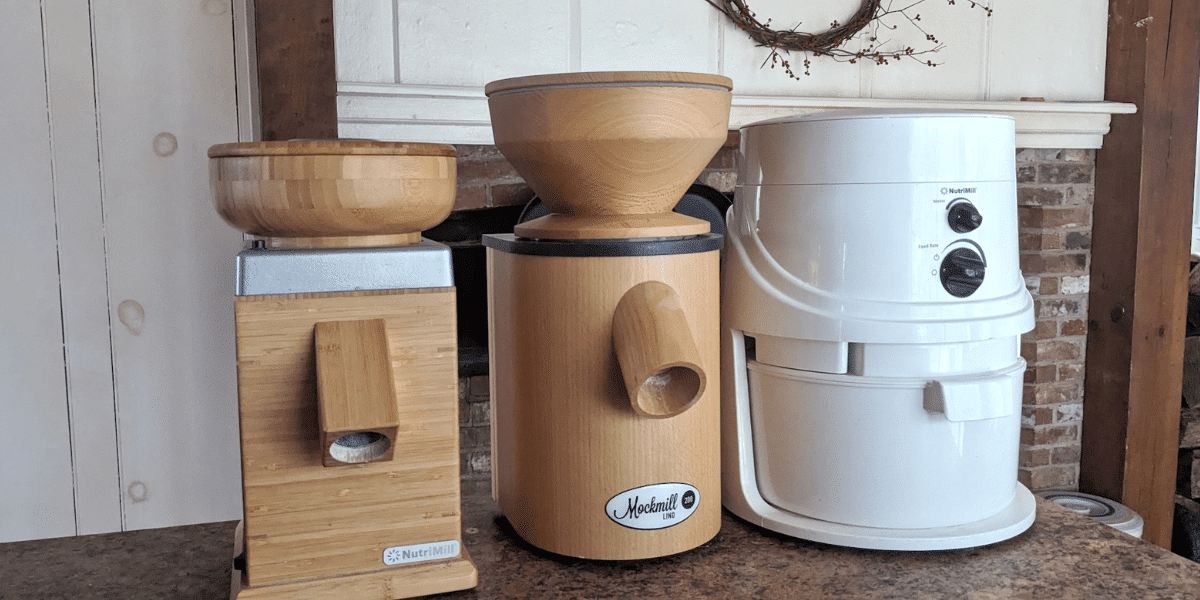
The Nutrimill Classic Grain Mill
Specs: 1200 watt motor, using stainless steel impact milling heads. Able to quickly mill 20 cups of flour and hold 12 cups of un-milled grains at a time.
Pros: One huge pro about the Classic is that it has a feature to make sure flour milled doesn’t heat over 118 degrees, which helps maintain the nutrients in the flour. It also mills some of the finest flour I’ve gotten out of any grain mill I’ve used, and it’s very budget friendly. Nutrimill also often has sales, dropping the price even lower if you’re willing to watch and wait for a deal. Overall very user-friendly and easy to operate and understand.

Cons: The enclosed flour container may seem like a plus to some, but it can cause issues. For starters, the bowl is hard to open and close. It can also be tricky to line the bowl up where it needs to be and NOT make a huge mess if you turn the mill on before the bowl is properly attached. If it’s not lined up exactly where it should be, flour explodes all over your kitchen. Not that I know from experience–promise.
An obvious con is the look of the machine, as it’s not pretty to leave on your counter–and if you’re planning on storing it away just know that it has a rather large footprint and probably won’t fit on many shelves or cabinets. The many pieces included with the machine can also be a pain to wash and store after use.
My experience: Overall, the Nutrimill Classic does a fantastic job of milling fine flour, and it’s easy to use. I’ve never had it struggle to do what I’ve asked it to or overheat, even when milling large amounts of flour. I will say that I found storing the mill cumbersome, and when I was using the Classic mill exclusively, this alone made me often pull out store flour to use in baking rather than deal with finding all the pieces for the Classic mill, grabbing it out of where I stored it, and milling flour.
Takeaway: I’d recommend the Classic as my #1 budget friendly mill that still does a great job. If not storing your mill out on the counter doesn’t bother you, and milling on demand isn’t important to you, I’d 100% recommend the Classic. However if you’re looking for an aesthetic mill to store on your counter an use every single day without having to wash a million parts after using, maybe read on.
Shop the Nutrimill Classic mill here. Use code SOULYRESTED for $20 off.
The Nutrimill Harvest Grain Mill
Specs: 450 watt motor with stone milling heads. Designed with a knob in the middle of the hopper for easy access to adjust the coarseness of the flour as it’s coming out.
Pros: I genuinely think the Harvest mill is the most beautiful mill on the market. I really like being able to see the flour as it’s coming out and adjust the coarseness of the flour as it’s grinding. Stone milling heads are durable and able to handle a decent amount of wear and tear. It also has a highly adjustable dial, allowing you to quickly change the coarseness from flour to cracked corn.
When comparing the Harvest to the Mockmill, one note I’ll add to the plus column for the Harvest is that it’s a bit easier to access the stones on the Harvest than it is the Mockmill. The hopper easily and quickly snaps off, wherease the Mockmill takes just a little more effort to unscrew the hopper and access the stones.
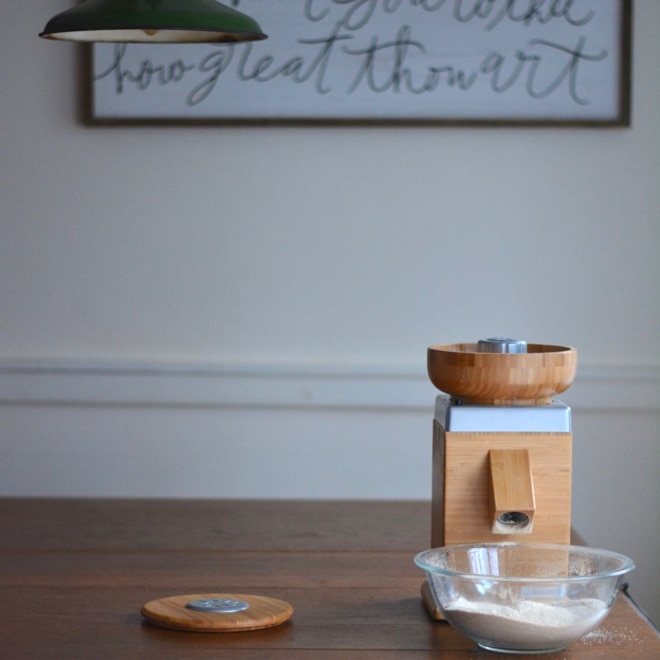
Cons: Although Nutrimill boasts of the Harvest containing a powerful motor, it often seemed inadequate for the jobs I asked it to do. The feed rate is slow, meaning it often takes a while for the flour to slowly stream out which can get tiresome. Even on the finest settings, it can be really hard to get fine flour, which means you’ll often find yourself sifting flours ground in the Harvest, removing some of the nutrients. Sifting will also remove the courser parts of the flour that the Harvest just can’t seem to grind, but seems a shame to also sift out the nutrients that we’re working hard to get.
My experience: I used the Harvest mill exclusively for years, and if you choose to go with the Harvest, you’ll definitely be able to make it work well for you needs. It’s so pretty, and works well on most countertops. It has the smallest footprint of any mill I’ve used, which is great for smaller spaces and kitchens. It was easy for me to store on my counter and even fit under my cabinets where a lot of other appliances don’t fit. However, in the end I found myself getting frustrated with fiddling with the knob all the time trying to get the flour finer than it wanted to come out. I also got tired of waiting for the sloooow feed of flour when I managed to get it fine.
Takeaway: Overall, I think the Harvest is a great grain mill if you’re willing to be patient with it. It’s beautiful, it goes on sale often, and it can be a great choice for first time millers. Just be aware of its limitations, and you’ll be able to crank out some decent flour with some trial and error and patience.
Shop Nutrimill Harvest mill here. Use code SOULYRESTED for $20 off.
The Mockmill 100 Grain Mill
Specs: 360 watt motor powering stone milling heads with a flour feed rate of 100 grams a minute. Hopper capacity of over 2 pounds of un-milled grains.
Pros: Offered in either the more budget-friendly plastic outer shell, or the slightly more pricy wooden outside. The 100 is the same machine as the Mockmill 200, just with a slower feed rate. So it will be able to preform all the same jobs as the 200 just slightly slower. Able to grind anything from super fine flour to cracked corn. An easy to adjust dial makes easy work of quickly adjusting the fineness or coarseness of the end product.
Cons: The prettier (wooden) model is a good bit more pricey than the classic plastic model, however keep in mind that the plastic and wooden models are the same unit inside just with a different outside. The feed rate isn’t ideal on the 100, given that it mills at half the speed of the Mockmill 200.
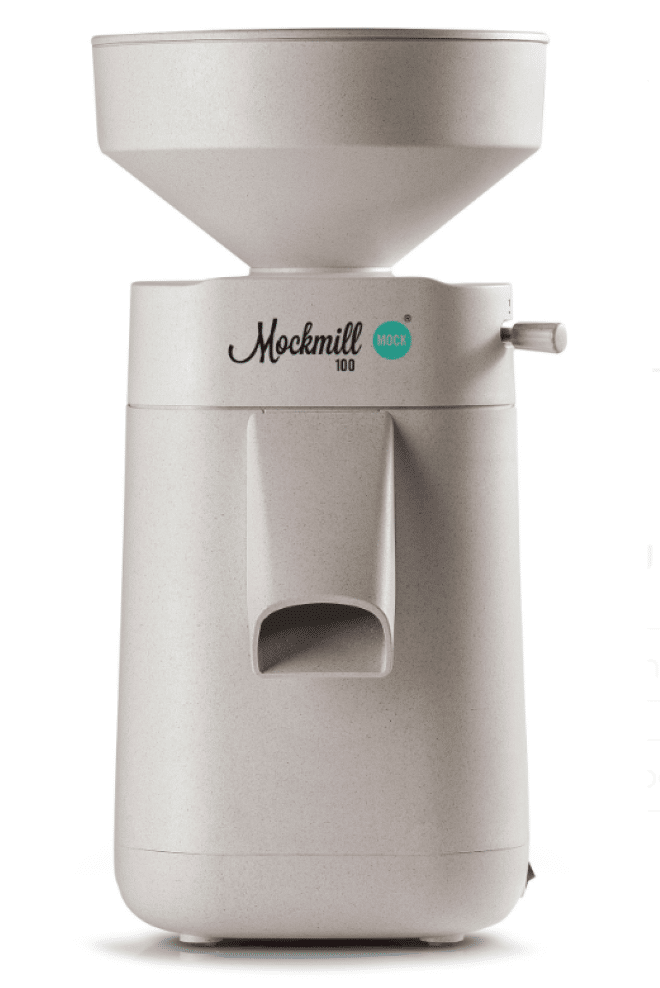
My experience: Overall a really well-designed machine. It doesn’t struggle or protest with any job you throw at it, and it produces really fine flour effortlessly. It never seems to overheat and overall just does a really great job. I personally used the Mockmill 100 as my first introduction to Mockmill when a friend let me borrow her mill to try out. In the end, when I got my own, I settled on the Mockmill 200 simply because I was willing to spend a little more for the faster feed rate. If that’s not a deal breaker for you, choosing the 100 will save you some moolah and you’ll be getting the same amazing machine and just have to wait an extra few seconds for your flour to come out of the stones.
Takeaway: If you’re wanting the well-designed ingenuity and power of the mockmill and are willing to wait an extra minute for your flour to grind, the Mockmill 100 is for you. If I was to start my milling journey all over again, I’d probably start out with the Mockmill 100 plastic model to make my wallet happy while I was starting to figure out the whole fresh milled flour thing, then consider upgrading to the 200 wooden model later when my budget allowed.
The Mockmill 200 Grain Mill
Specs: 600 watt motor with durable milling stones that output 200 grams of fine flour per minute (twice the output of the Mockmill 100).
Pros: The Mockmill is a German engineered, corundum-ceramic milling stone workhorse. It makes quick and easy work of milling superfine flour, and can even handle re-milling like a champ. If for some reason you aren’t happy with how course or fine your flour came out the first time, you can re-mill as many times as you’d like without damaging the stones. But given how easy it is to adjust the coarseness, the likelihood that you’ll want to re-mill is minimal. I also love the fact that the Mockmill has a number dial on the mill and comes with charts to help you know what settings to use to mill different grains or alternative grains.

Cons: The prettier wooden outside costs a good bit more than the plastic external mill. Mockmill rarely (if ever) has sales, and they’re often only for sale for preorder or are backordered.
My experience: I’ve been using my Mockmill 200 for a few months now, and I’ve been thrilled with how it’s preformed. I personally feel that the Mockmill Lino models (both 100 and 200) offer the beauty of the Nutrimill Harvest with the functionality of the Nutrimill Classic (milling superfine flour quickly), which is basically the best of both worlds. I LOVE being able to grind superfine flour on demand and mill right into a bowl of my choosing–watching the flour come out all the time and being able to easily adjust the coarseness as it’s milling.
Takeaway: The Mockmill 200 is now my daily-use grain mill. It has made it simple and easy for me to finally make the switch to only using 100% fresh milled flour in our home. While there’s nothing wrong with any of the other mills, and in fact they each have their pros, the Mockmill is what works best for our family at this point in time.
Honorable mentions: Komo, kitchen aid attachment, and hand crank
The Komo Grain Mill: I considered the Komo mill for a while, but upon further research, I found out through the grapevine that the Komo design is virtually the same as the Mockmill, however if you want the same amount of power and the same feed rate as the Mockmill, you’re gonna have to pay much more for the comparable model of Komo. It took me a while to figure this out because Komo sells so many different models and varieties–it was so confusing! So if you’re interested in a Komo, rest assured you will still wind up with a great machine, you just might spend a little bit more to get it.
The Kitchen Aid Grain Mill Attachment: I personally think this is a pricey choice for what you get, and I’ve heard numerous complaints about the attachment killing the motor on their mixer because it simply requires such a high output and asks too much of a machine that wasn’t really designed to mill flour.
Hand-Crank Grain Mills: Some folks are looking for a hand-crank grain mill to avoid needing power to turn grains into fresh flour. While that sounds romantic, when you’re standing there cranking your grain mill for hours just to get enough flour to make a loaf of bread, you might reconsider. Some folks have, love, and use their hand-crank grain mills all the time and have great results, I just don’t have an interest personally. Also, I’ve never understood why folks think they need an off-the-grid source for milling flour yet their oven is dependent on power. Just sayin…
More about grain mills & fresh flour:
- Make lasagna noodles with fresh flour
- Why I started milling my own flour
- Sourdough bread made with fresh flour
- Fluffy 100% whole wheat dinner rolls with fresh flour
- Tips for Using Fresh Flour (a podcast chat between myself & Lisa Bass)
Tell me about your grain mill questions!
If you have any questions, leave a comment below. And please tag me on ig to show me your grain mill! @souly.rested.
Pin this for later!
Click on the image below to pin this post.
Find out why SoulyRested was considered to be one of the One of the Top Homesteading Blogs.
Glance at my Resource Page if you’d like to get a glimpse of all the supplies I use and recommend for everything from gardening, to sugarmaking, to chicken care, to baking.

I’d love to connect!
To find me in some other neck of the woods, just click any (or every!) icon below:

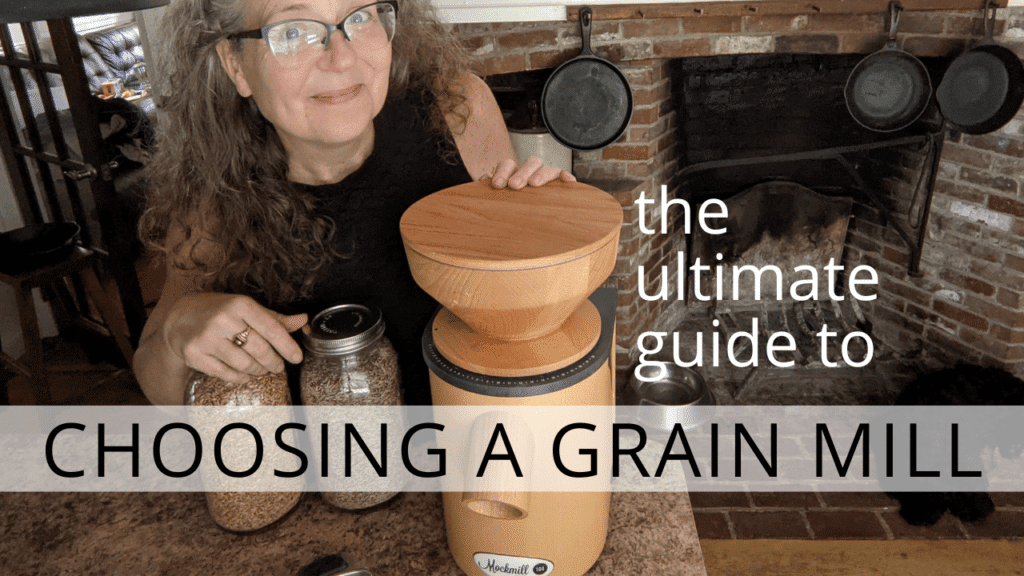
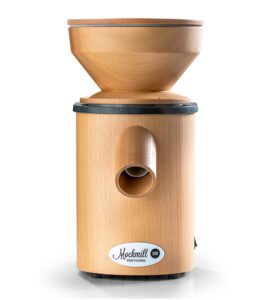
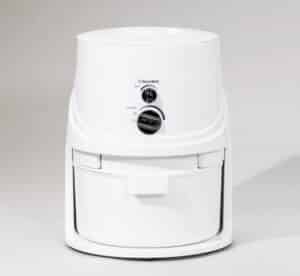
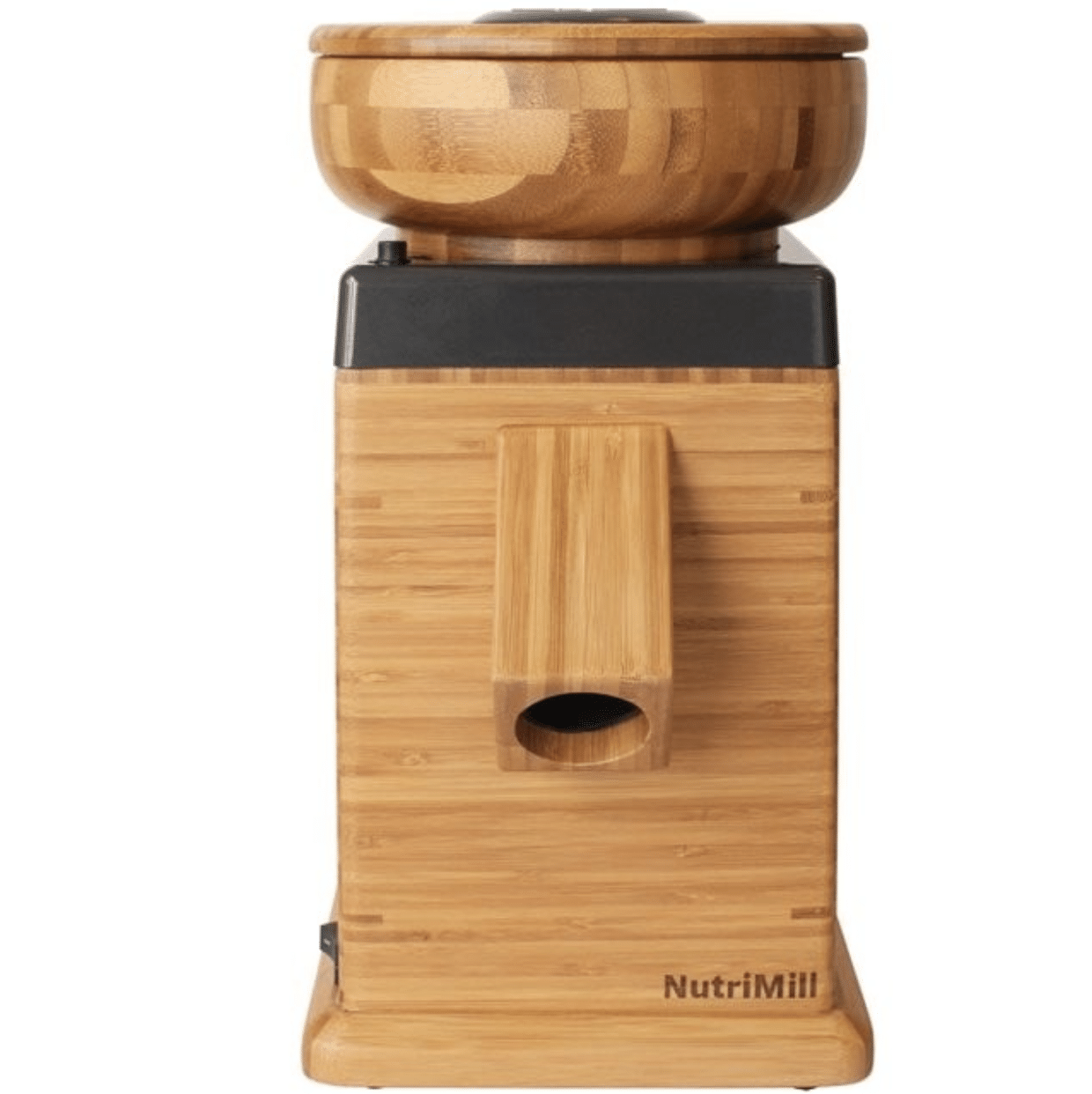
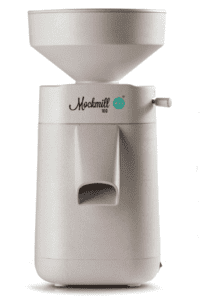
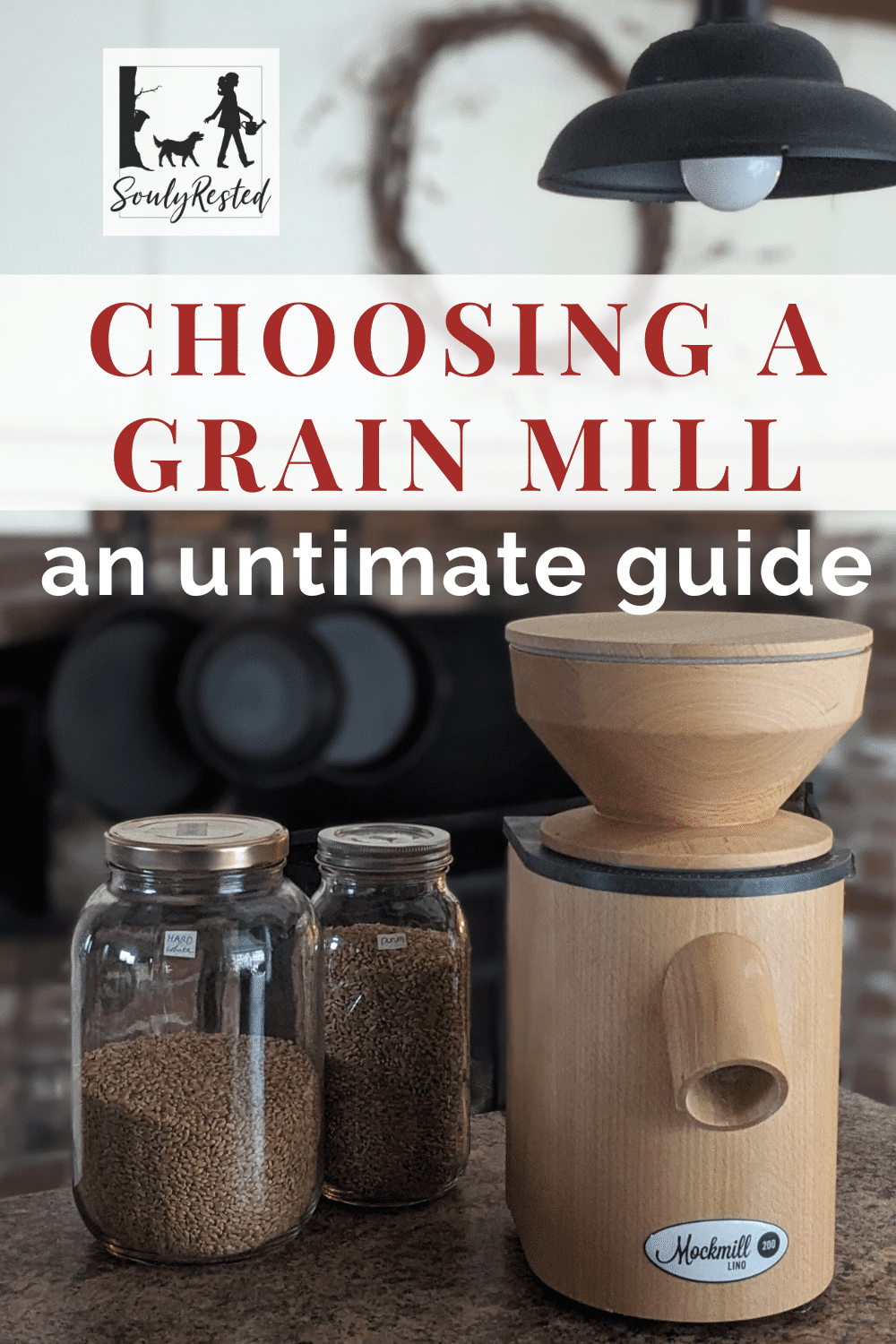




It was interesting to learn about the different kinds of grain mills.
Thanks for the side by side comparison on all of the models!
Thank you for the information on side by sides. I love the pros and cons. I take forever to make decisions and often seek out reviews to help.
Blessings!